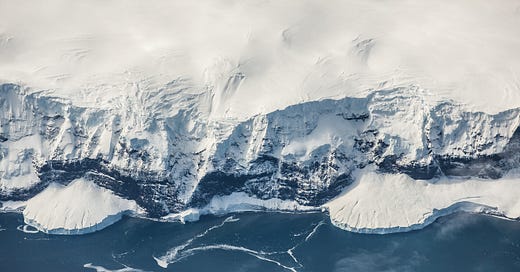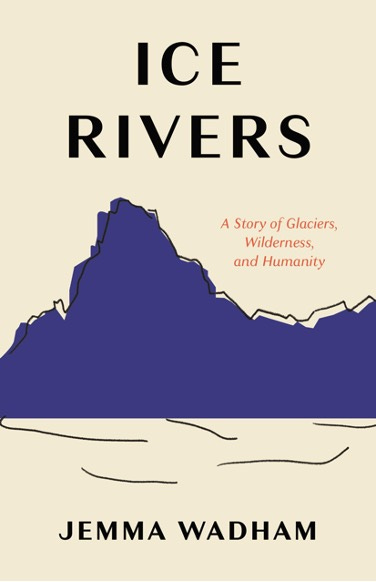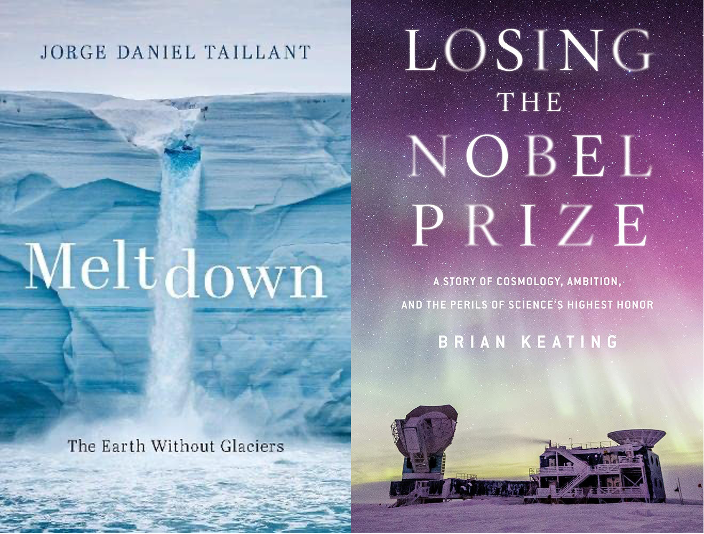Glaciers shape our world. They have an outsized impact on our global climate, keeping us cool and our current sea levels from destroying coastline cities. Glaciers are integral to agriculture and life in long standing communities across Asia and South America. For a long time, the science of these incredible forms paled in comparison to their role in our world.
But scientists have been learning an incredible amount about these giant areas of ice that cover our poles and mountaintops across the world. And one glaciologist has done research on glaciers of every continent learning about their geobiochemistry. Ice Rivers: A Story of Glaciers, Wilderness, and Humanity by Jemma Wadham shares her story and research as she’s traveled the globe.
What I love most about this book is the approach Wadham takes. Each chapter focuses on her experience and research at one glacier, each unique in its geography, biochemistry, and future. Her career has taken her across the world: the Haut Glacier d’Arolla in the Swiss Alps, Finsterwalderbreen in Svalbard, Leverett Glacier in Greenland, Shallap and Pastoruri Glaciers in Peru, Steffen Glacier in Chile, Chhota Shigri in Indian Himalaya, and Joyce Glacier in Antarctica.
Ice Rivers is a cool hybrid between science discovery memoir where a scientist shares their personal perspective on the experience of their research, and traditional science books sharing the results and details of the research itself. Throughout the book she shares her experience of setting foot on a glacier for the first time in the Swiss Alps, her experiences of the long journey to achieve a permanent professorship, the grind of winning grants to fund field research, and her experience of having a grapefruit size tumor removed from her brain.
Even after previously reading an entire science book on glaciers, I learned new things from Wadham. She offers a unique niche perspective on the ways waterflows within glaciers impacts their structure and movement. Depending on how water flows through the glacier, which can change throughout the seasons, the glacier will move in different ways or at different rates. Life exists under glaciers and within its waters (a relatively new insight from her research). And even in frigid places like the Antarctic, there can be liquid water in the glaciers – the pressure of the crushing weight can change freezing temperatures and allow water to exist!
I thoroughly enjoyed this book. It’s incredibly engaging and interesting, and I blew through it in just two evenings. For Wadham’s first “non-science-y” publication (according to her) she crushed this book. Those who have been following my reviews for a while know how much I love science discovery books and this one is a gem. It’s a perfect combination of experience and science. If you’re new to this type of book and want to wade in, this is a fantastic book to start with.
Published: September 2021
Publisher: Princeton University Press
Format: Paperback
If you think this sounds interesting, bookmark these other great reads:
Meltdown: The Earth Without Glaciers by Jorge Daniel Taillant (2021) | Read my full review
Losing the Nobel Prize: A Story of Cosmology, Ambition, and the Perils of Science's Highest Honor by Brian Keating (2018) | Read my full review
This post contains affiliate links, allowing me to earn a small commission when you purchase books from the link provided. There is no cost to you, and this will allow me to keep this newsletter free and open to all. Happy reading!






